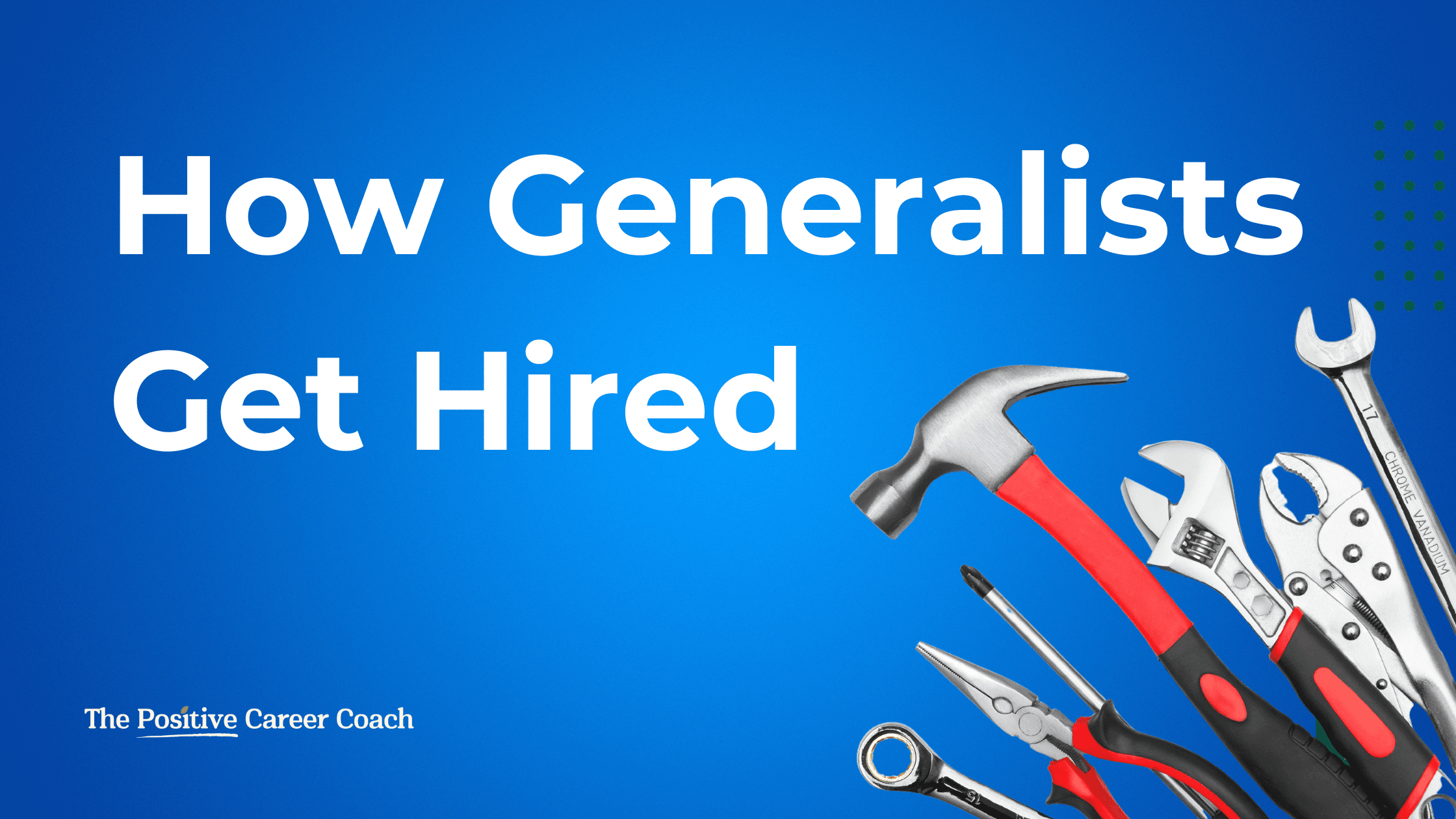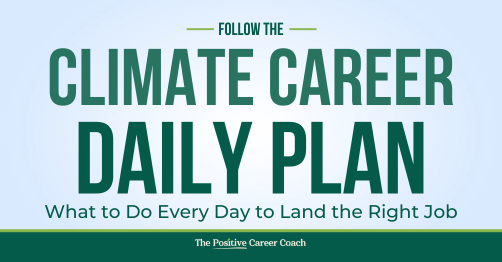How to Build a Career in Climate Change as a Generalist
Imagine this… You’re not the most technical person in the room. You’re also not the most commercially focused.
But when it comes to climate change career opportunities and roles in sustainability, you’re the one who can hear both sides, connect the dots, and say… “Okay. Here’s what that actually means.”
Of you are doing that? Then you are: A translator. A Bridge. A Generalist
That’s how I described myself in the first decade of my career:
I knew enough about tech to understand the engineers (and the cult sci-fi references), and enough about the business to interpret what the commercial team really needed (and where the best restaurants for client entertainment were).
Then I’d translate. Back and forth. Again and again. Until things made sense for both sides — and we moved forward. All parties pulling together, not in isolation, and not in different directions
If you’re a generalist, you’ll know this role well. But what you might not know is just how valuable it is—especially in climate and sustainability work, where the ‘stakeholders are disperate and the delivery set against vague ambitions.
But, if you are reading this then you already know of the challenges you might face if you feel you can do anything, but no-one wants to give you the chance to do it. On top of that, you are probable senior in role and it’s been a while since you’ve had to tout your wares, so to speak.
You are not alone, many of my clients are in this position.
Generalist? Pick a Problem. Then Translate It.
Here’s where many of my clients get stuck:
“I’ve done a bit of everything.”
“I can fit into loads of roles.”
“I’m great at connecting dots and spotting patterns.”
And all of that is true. But here’s the problem: If you don’t pick a problem, no one knows where to put you.
Being a generalist isn’t the issue.
Being vague is.
You don’t just need a narrow niche—you need a clear one. One that aligns your experience with something that matters to the organisation you want to work with.
That’s why we start with:
What’s the problem you want to help solve?
Who has that problem?
What language do they use to describe it?
When you answer that, you can tailor your pitch to match their context—and suddenly, your “generalism” becomes a unique, strategic advantage.
Science Section – The Strength of Sitting In-Between
Let’s dig deeper into this idea from Structural Hole Theory by sociologist Ronald Burt.
He found that the most influential and valuable people in any organisation or ecosystem often aren’t the ones with the deepest technical expertise.
They’re the ones who sit between silos—on the edges of different groups—and act as bridges.
This is the generalist’s edge.
You:
See across boundaries that others are blind to.
Spot opportunities that fall between standard job descriptions.
Translate across disciplines, departments, and ways of thinking.
This is especially powerful in climate work, which is:
Cross-sectoral by nature.
Still full of silos (policy ≠ product ≠ comms ≠ community).
In desperate need of people who can join the dots and move things forward.
So if you’ve worked in different industries, functions, or roles and felt like your career hasn’t followed a “straight line”—this theory says: that’s not a flaw, it’s a feature.
But here’s the catch:
“You only become valuable when you’re able to frame that experience in a way that matches the problem a company is trying to solve.”
Translation isn’t just about language. It’s about relevance.
And relevance starts by understanding what they care about—then positioning yourself as the connector who brings context, clarity, and momentum to messy challenges.
Want expert insider advice on landing your climate role? Get 10 tips from a recruitment veteran on how to pivot into your climate career successfully
Positioning For A Generalist
I wrote the “Make Them Get You” playbook, based on 100’s of hours of real client experience and inside knowledge from the other side of the hiring table. And it covers the ‘how’ to do the research and ‘read’ your audience.
>> Check it out (for free) HERE
But after a few conversation this recently I wanted to add more with the following strategies and tactics…
1. Want to stop sounding vague and start sounding valuable?
You have to believe it first. So start with these prompts to get into the right way of thinking about your value:
Where have you translated before?
What kinds of teams, disciplines, or domains have you connected in past roles?
What’s one big messy problem that energises you?
Not a job title—an actual challenge or friction point.
What would the organisation call that problem?
Use their words—not yours. (See the guide mentioned above for how to find those words)
2. Connecting The Dots
OK, now lets make the link between two points - classic generalist skill right?!
So pick a previous role and map it to a future requirement with this format:
“I’m a better X because I’ve done Y for years.”
Examples? - sure. In each case the implication is that you understand both sides
I’m a better researcher because I was a designer for years
I’m a better entrepreneur because I’ve been all manner of roles
I’m a better product manager because I’ve been a designer, researcher and strategist
3. Bonus Reframe – When Your Career Doesn’t Fit In a Box
When your career has spikes, pivots, and squiggles, explaining what you “do” can feel overwhelming. You might:
a) Harp on too long and lose them
b) Overexplain and confuse them
c) Dilute your brilliance trying to simplify
Here’s a better way (hat tip to Elizabeth via a Generalist World):
🚫 Instead of saying: “I do X, Y and Z”
✅ Say: “People seek me out for…”
For example:
Executives seek me out as a strategic business partner to solve bold problems without a clear pathway.
People seek me out to rapidly connect the dots from insight to impact for sustainable growth.
Innovators seek me out to pinpoint what hurts—so they avoid wasting time solving the wrong problem.
See the difference?
It’s not about listing skills. It’s about claiming the value people already recognise in you.
Summary - Four Steps To Position Yourself Like The Strategic Generalist You Are.
If you’re a generalist exploring a shift into climate or impact work, try these four focused steps this week.
1. Start with the Problem
Pick one messy, meaningful problem you’d like to help solve.
Not a job title—a challenge you care about.
e.g.
Getting regenerative agriculture practices adopted by mid-sized farms in Europe
Improving repair and reuse incentives in consumer electronics supply chains
Accelerating EV adoption by solving last-mile charging access in dense urban areas
Helping public sector teams make evidence-based funding decisions on adaptation projects
Yes this is hard, but practice this approach, even if you are not 100% sure this is the challenge or battle you want to fight right now.
2. Write a Headline That Frames You for That Problem
Craft a 1–2 sentence LinkedIn headline or networking intro that uses their language, not yours.
Think: “I help X do Y so they can Z.”
3. Apply the “Better Because” Framework
Use this to show how your experience gives you an edge:
“I’m a better [role] because I’ve done [related but different thing] for years.”
“I’m a better systems thinker because I’ve worked across commercial, data and design.”
“I’m a better strategist because I’ve delivered from policy to product.”
4. Trial the “People Seek Me Out For…” Reframe
Turn your complex background into a magnet for attention.
“People seek me out for…”
“…connecting insight to action in chaotic systems.”
“…spotting patterns across silos to unlock practical solutions.”
OK, with these tactics in hand you should be able to stop worrying about the ‘challenge of being a generalist’ and start seeing yourself as the truly useful contributor that our space needs (as well as being able to help others recognise that too)
Want more help to get started in the climate career you want?
If you want more help, I provide this kind of support (almost) weekly via the “Start In Climate Newsletter” No fluff, no spam, just direct actionable advice from a career specialist to help you get the job you want. Check it out, you can unsubscribe when you get the job or if I’m not helping you don’t help you.





